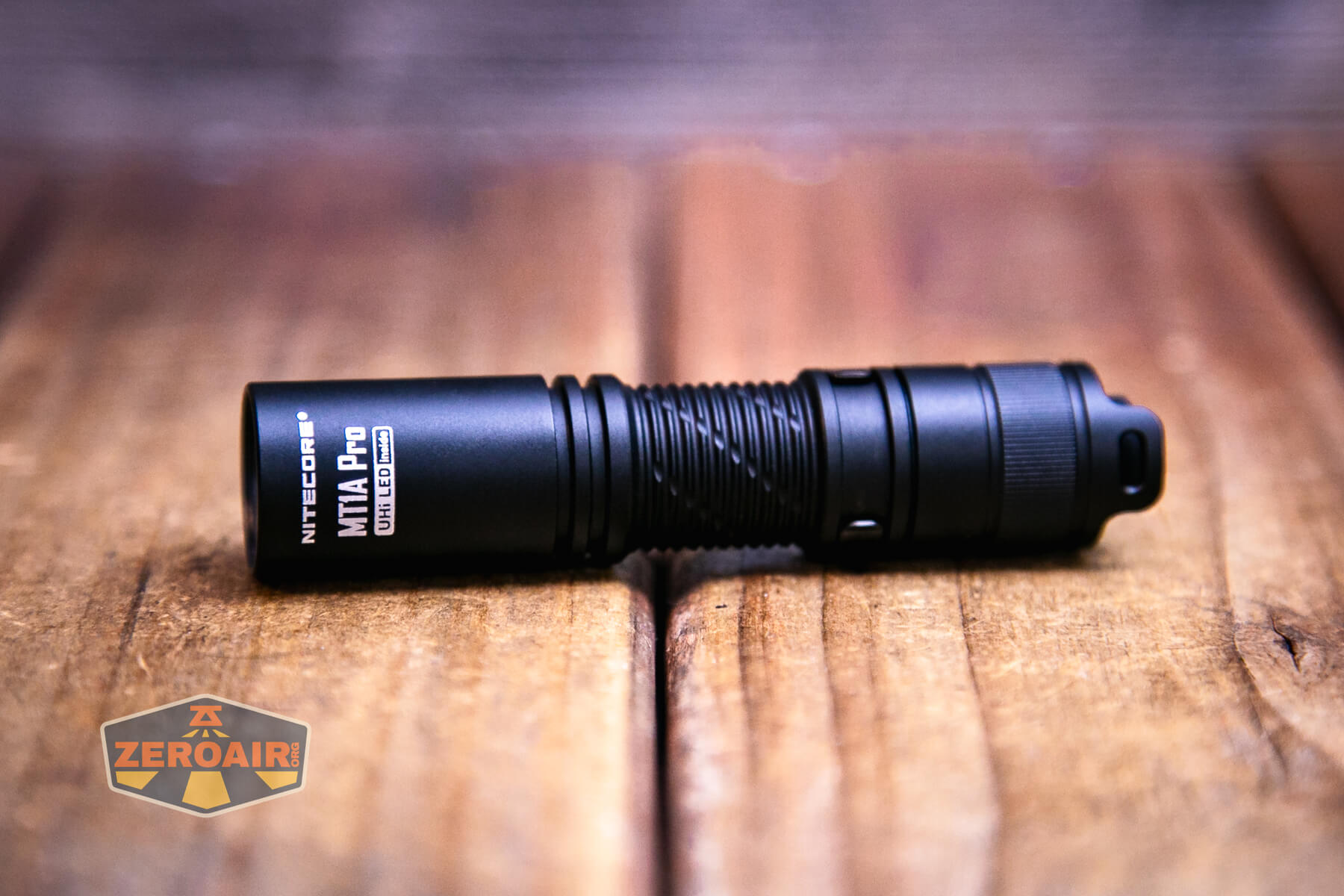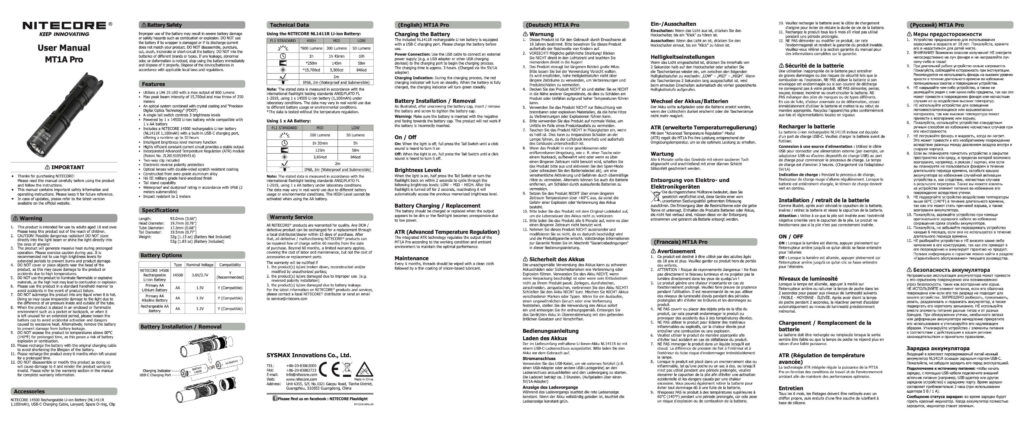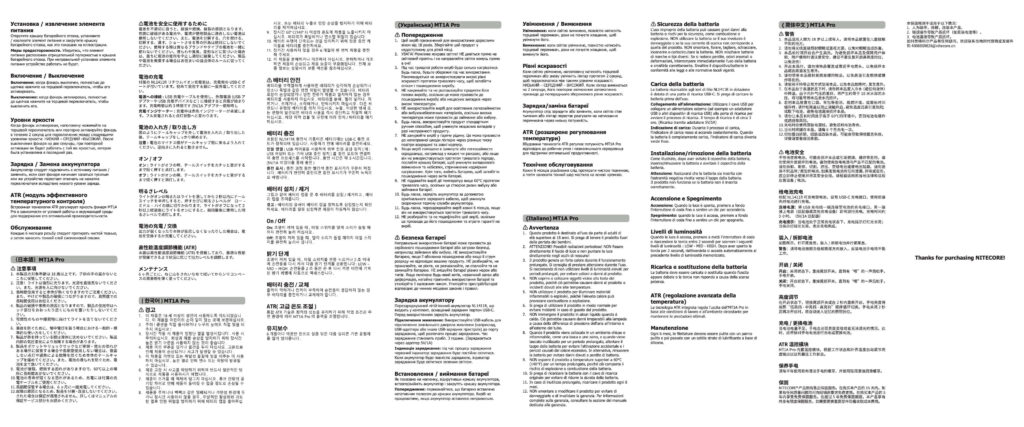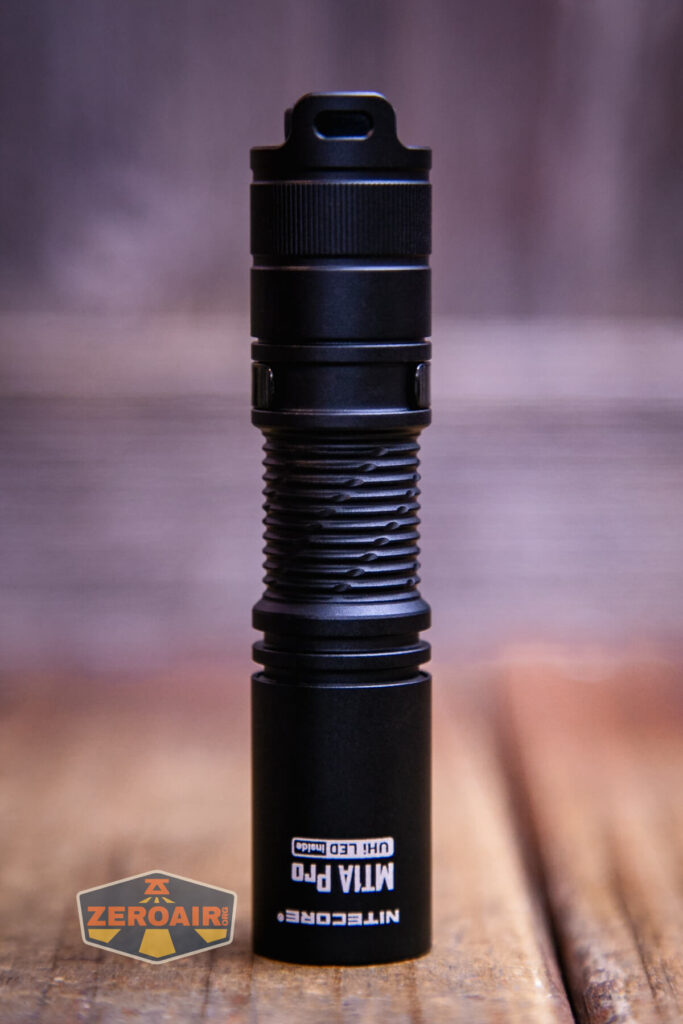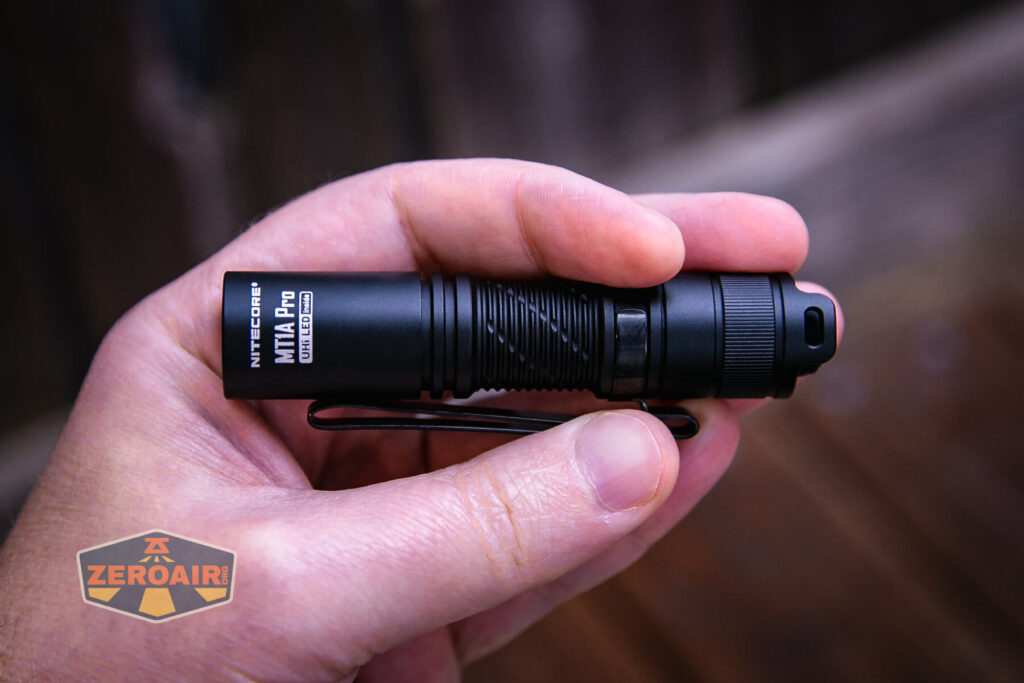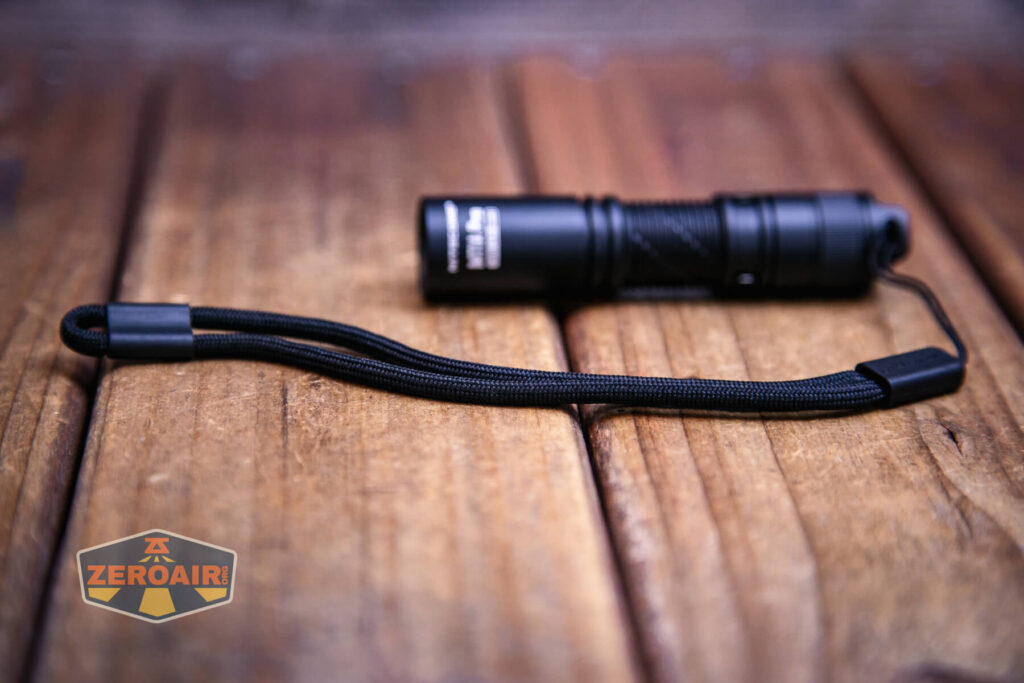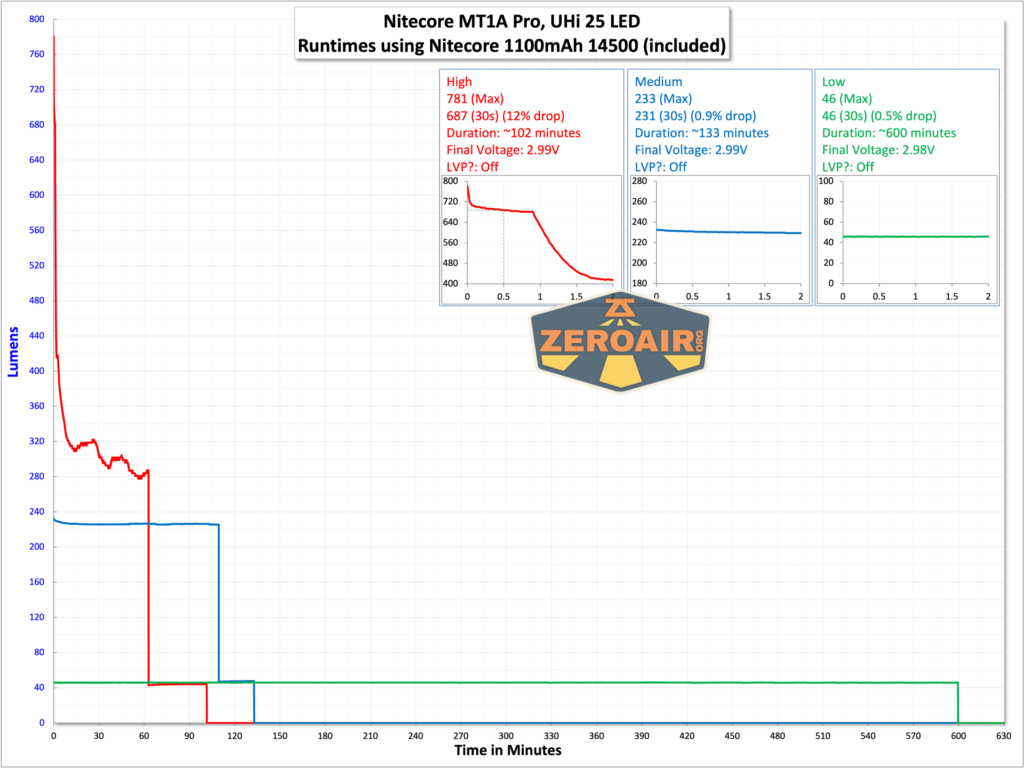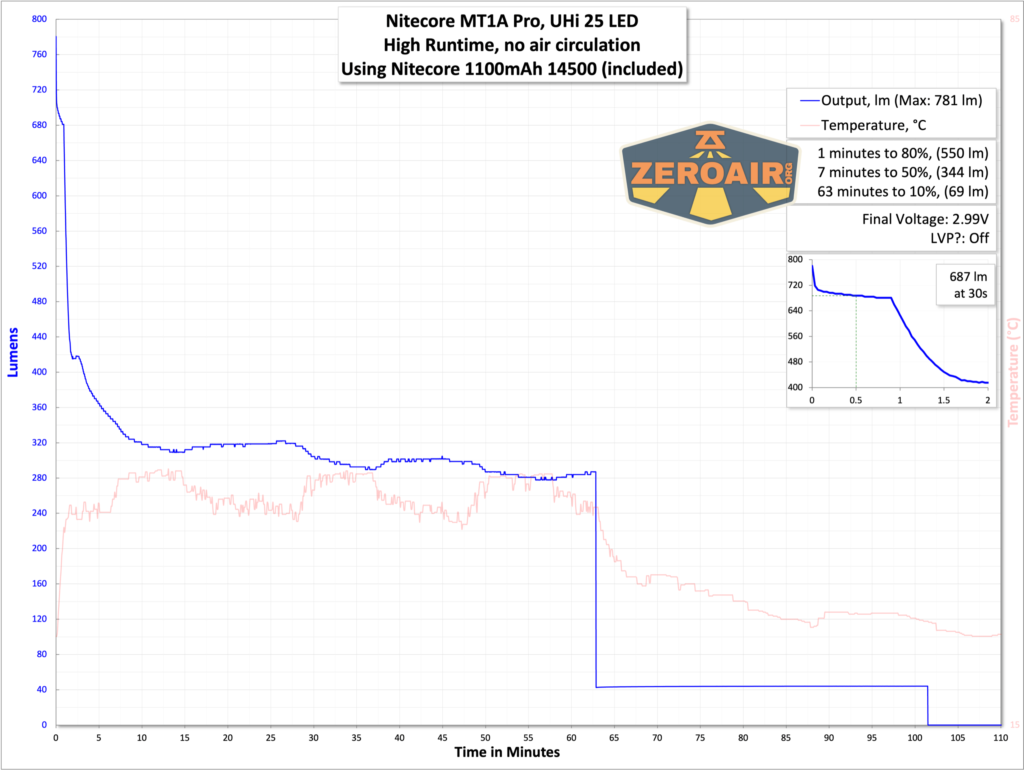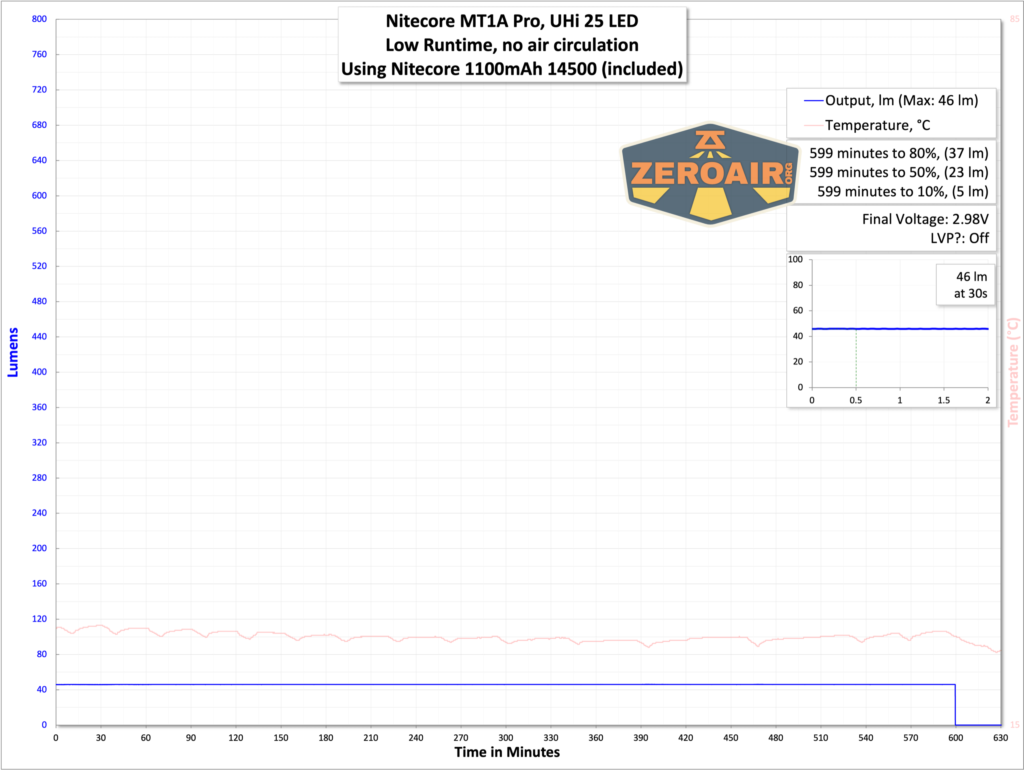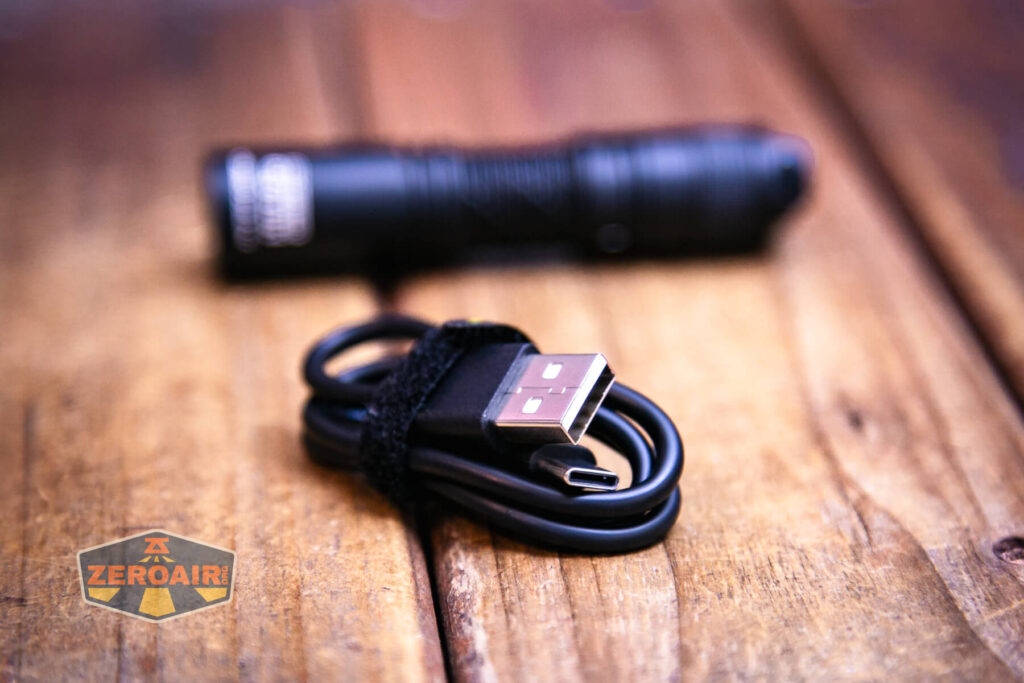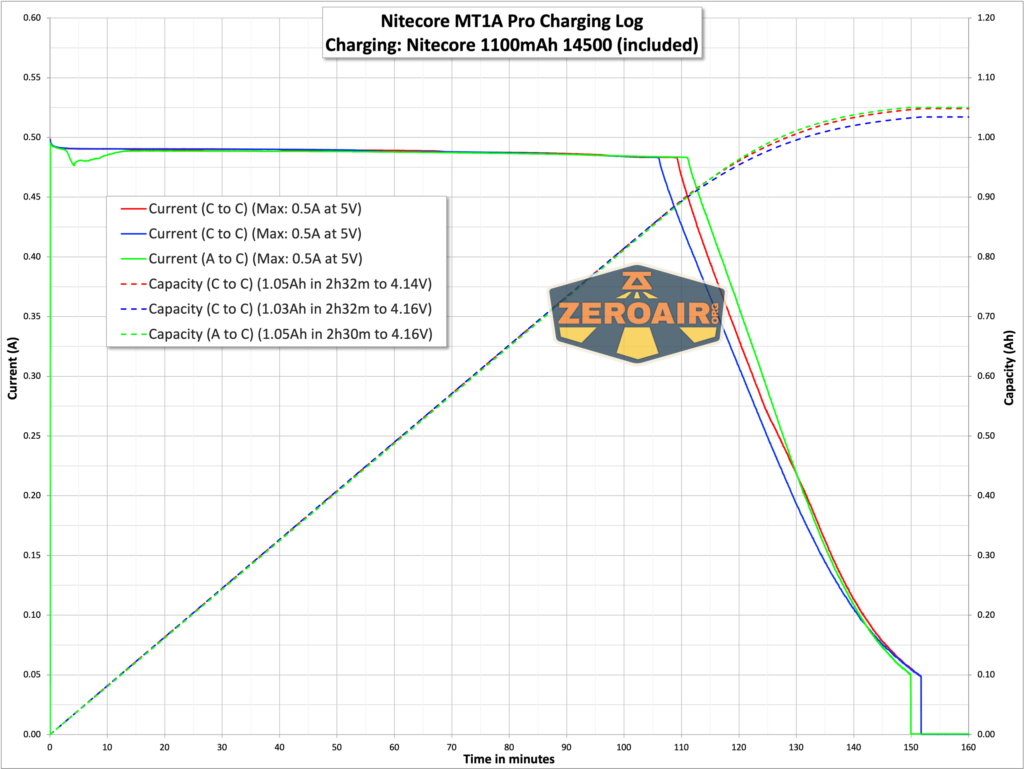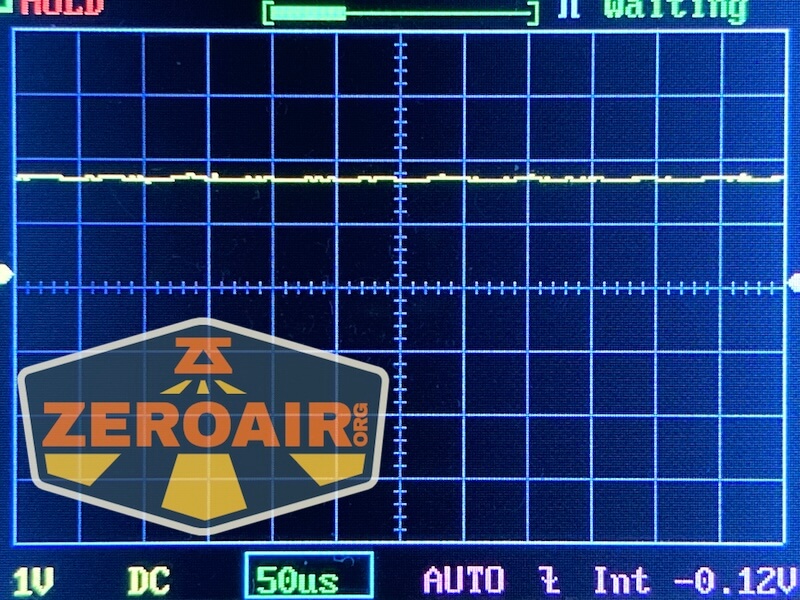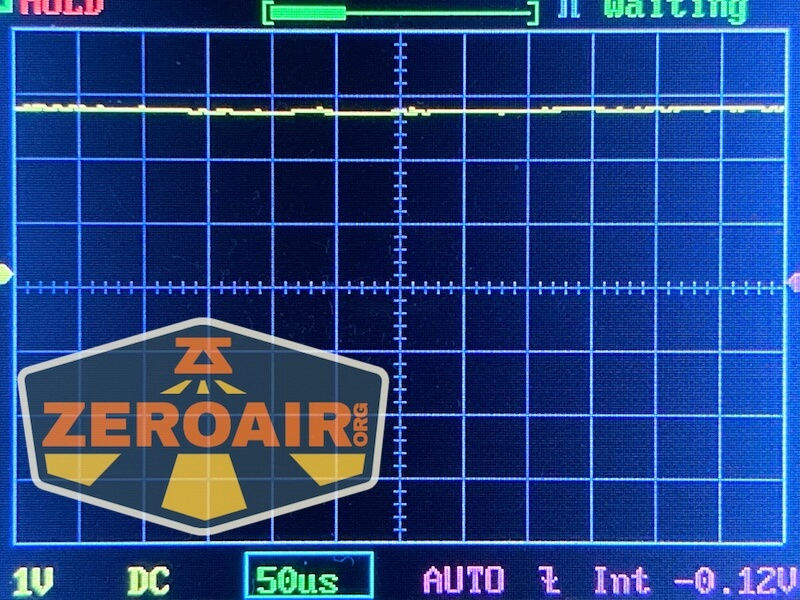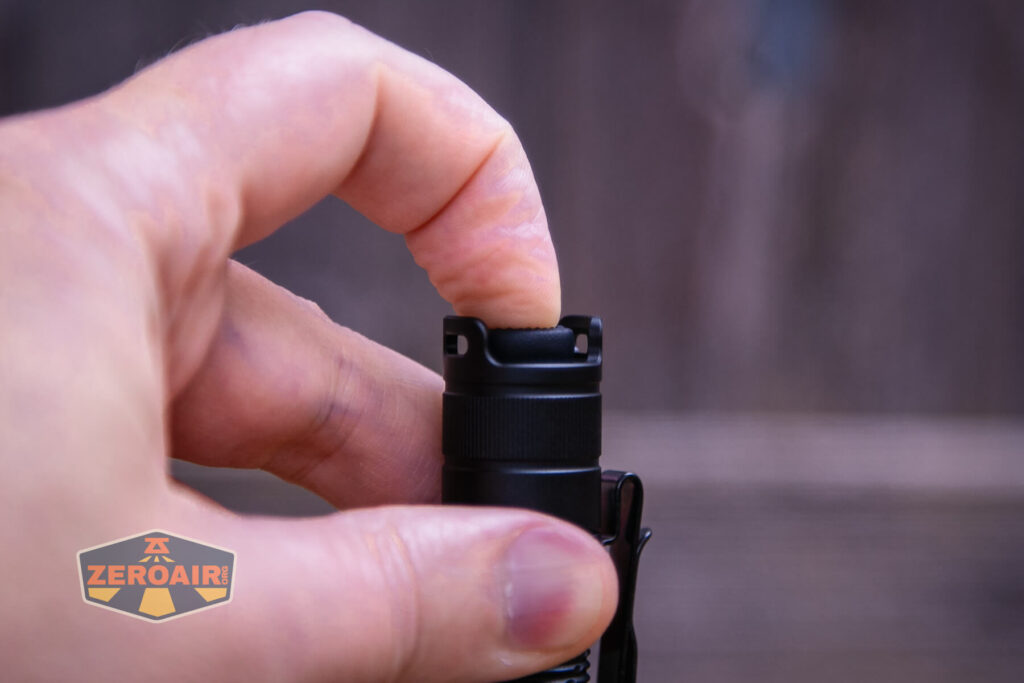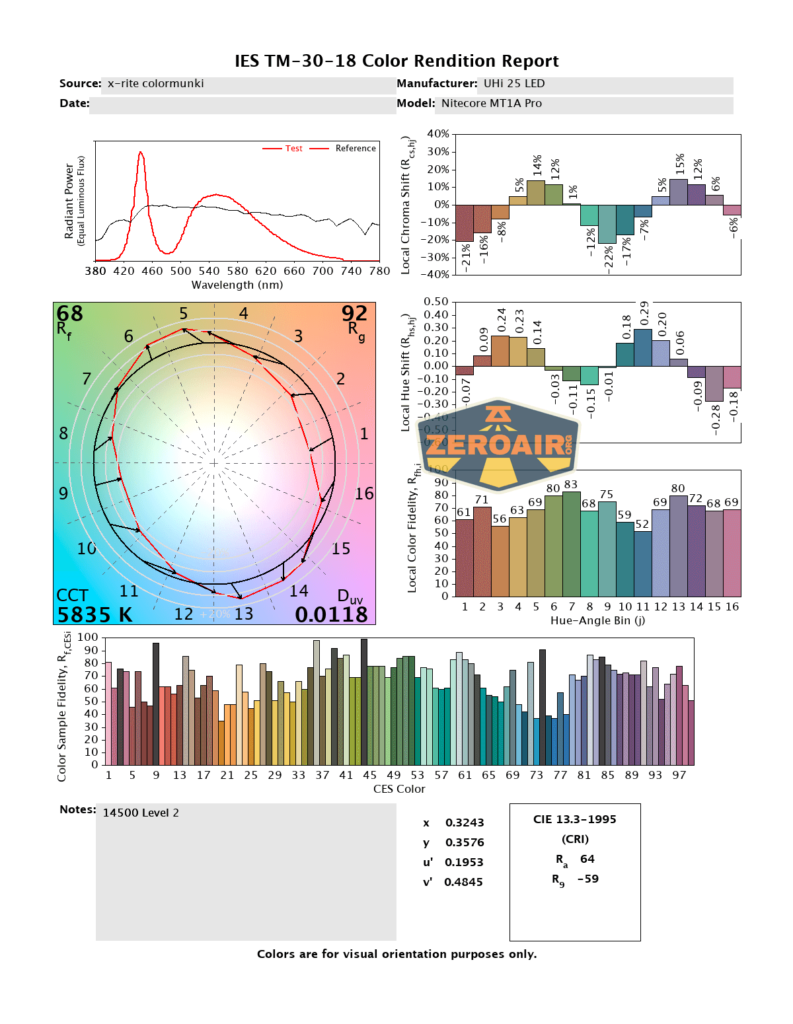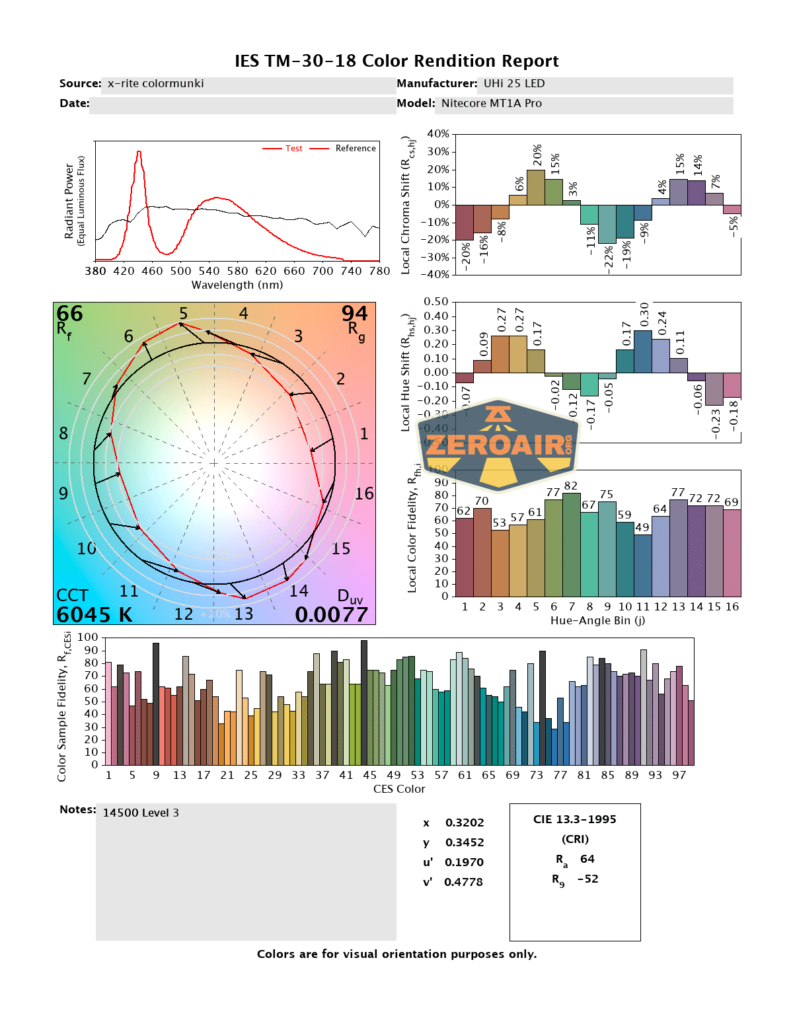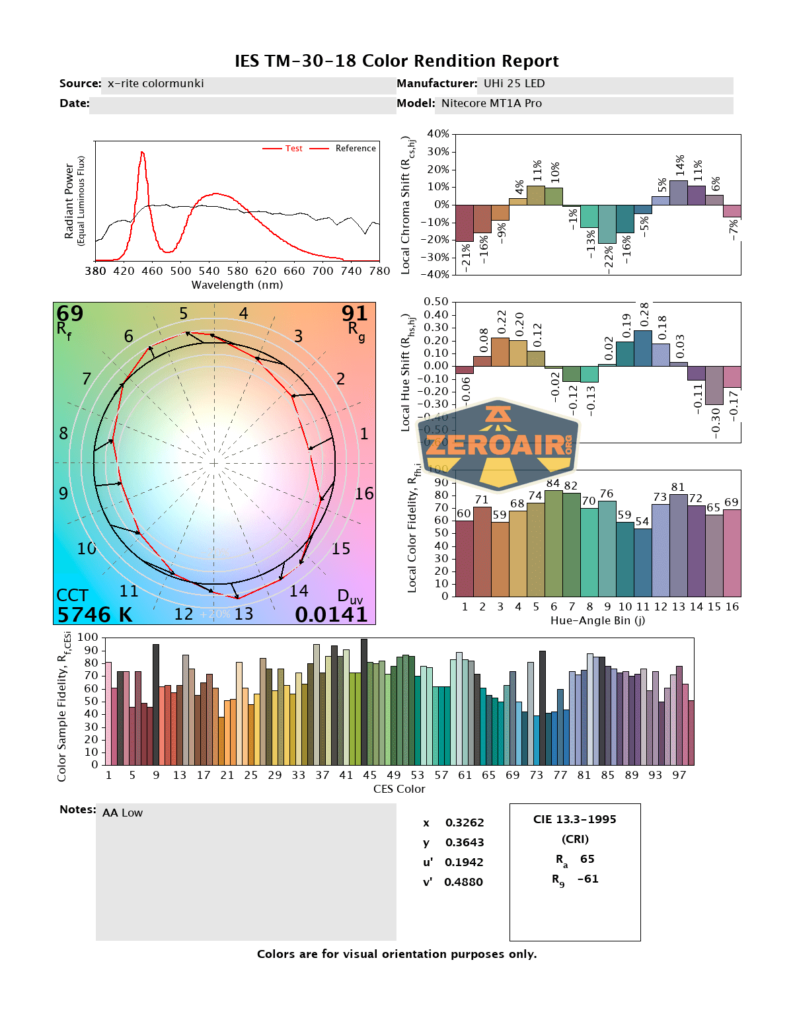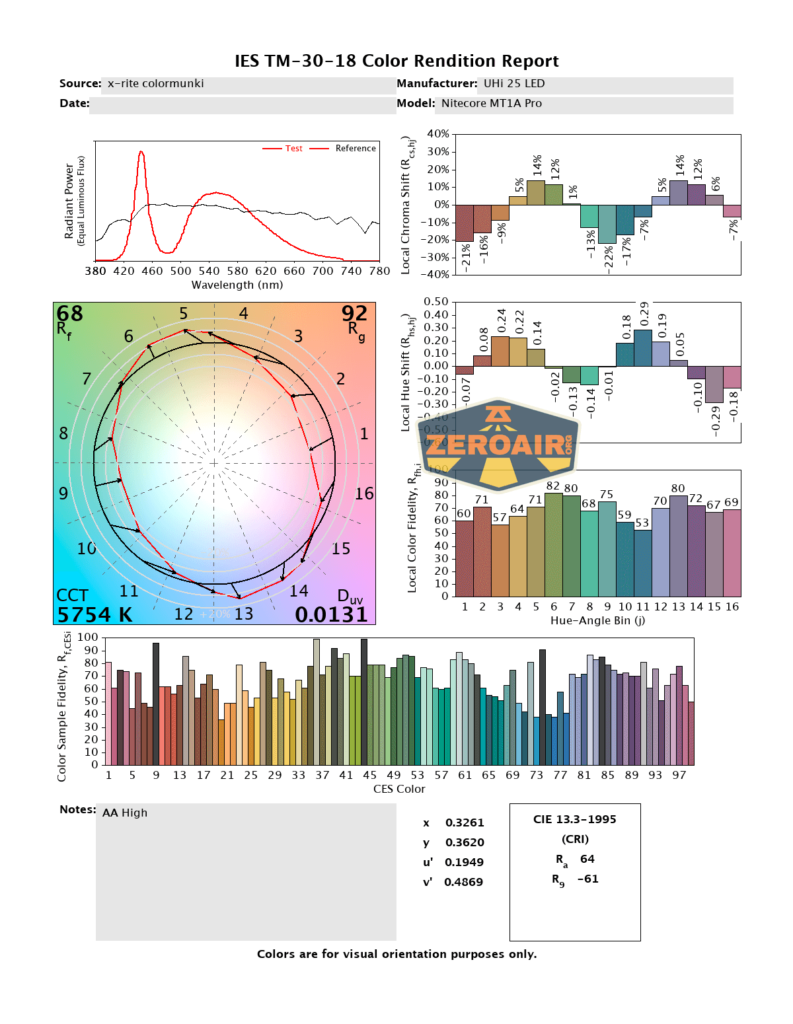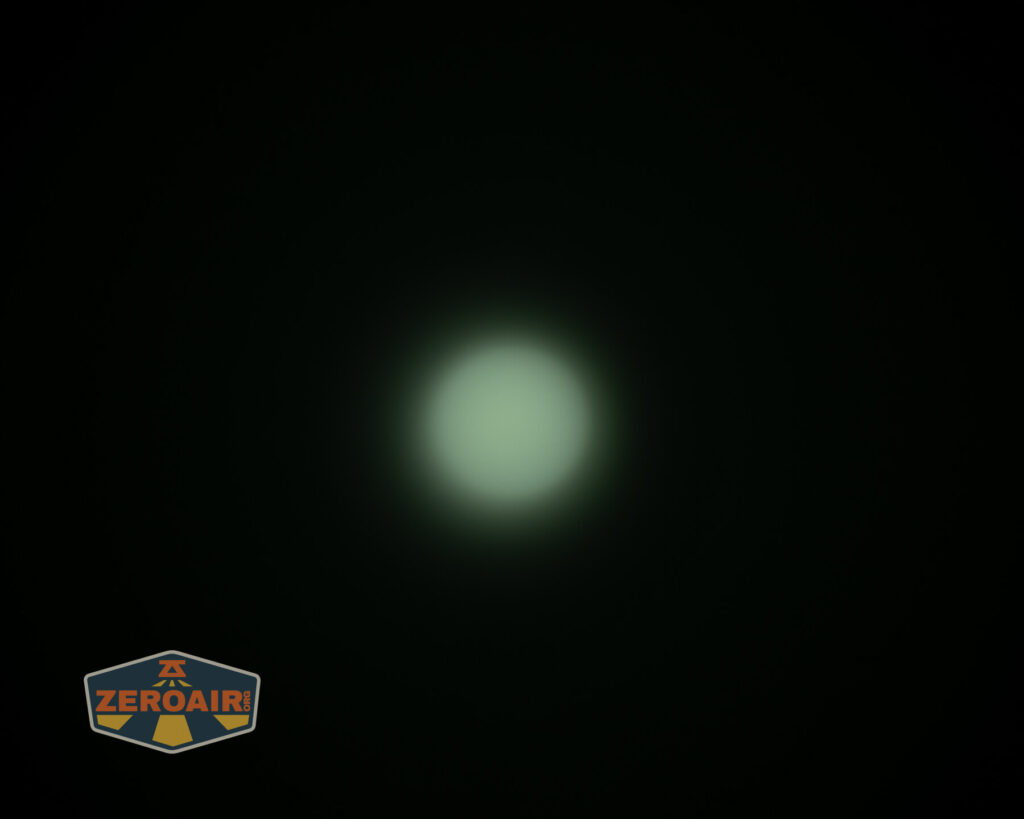Nitecore MT1A Pro EDC Flashlight Review
The Nitecore MT1A Pro EDC flashlight uses on UHi 25 LED, giving it great throw and output. It can run a 14500 cell (included) but also can run AA, too! Read on!
Official Specs and Features
Here’s a link to the Nitecore MT1A Pro EDC flashlight product page at nitecorestore.com.
Versions
There’s just one version of the Nitecore MT1A Pro EDC flashlight.
Price
The Nitecore MT1A Pro EDC flashlight is selling now at NitecoreStore.com for $41.95. That includes the cell, too!
What’s Included
I didn’t get the retail package (with box) but I think I got most of the package. Here’s what I got:
- Nitecore MT1A Pro EDC flashlight
- Nitecore 1100mAh 14500 cell
- Charging cable
- Lanyard
- Pocket clip
- Spare o-ring
Package and Manual
I didn’t get a box, but here’s the manual.
Build Quality and Disassembly
The Nitecore MT1A Pro EDC flashlight feels solid. It follows the design language of other recent Nitecore lights such as the Nitecore MT1C Pro and MT2C Pro.
The tailcap has a spring. Threads on the body are quite long and require tons of turning.
Inside the cell tube is a button – there isn’t a spring here.
Size and Comps
Dimensions Length: 3.66″
Head Diameter: 0.78″
Tube Diameter: 0.68″
Tail Diameter: 0.77″
Weight 1.83 oz
If the flashlight will headstand, I’ll show it here (usually the third photo). If the flashlight will tailstand, I’ll also show that (usually in the fourth photo).
Here’s the test light with the venerable Convoy S2+. The version below is a custom laser-engraved Convoy S2+ host by GadgetConnections.com. I did a full post on an engraved orange host right here! Or go straight to GadgetConnections.com to buy your Convoy S2+ now!
Also above is the light beside a TorchLAB BOSS 35, an 18350 light. I reviewed the aluminum version of that light in both 35 and 70 formats. I also reviewed that specific edition, the “Oveready BOSS FT Collector Vintage Brass” 35. I love it!
Retention and Carry
A lanyard is included and attaches through either of these loops in the tailcap.
The included pocket clip is a standard two-way friction-fit clip. It’s long but does suit the MT1A Pro body nicely.
Power and Runtime
The Nitecore MT1A Pro EDC flashlight includes one lithium-ion cell – a 1100mAh 14500. It’s a standard button top cell, which is nice.
The Nitecore MT1A Pro EDC flashlight will also run a 1.5V cell, which can be primary or rechargeable.
Whatever cell you use it goes into the light with the positive end toward the head.
Below are a few runtime tests with the included lithium-ion cell.
You lose one mode when using 1.5V cells, and I didn’t perform any runtime tests with those.
Charging
While the Nitecore MT1A Pro EDC flashlight itself doesn’t have charging, the included 14500 cell does. The USB-C charging port is on the positive end.
A charging cable is included (USB to USB-C).
Here’s a charging graph. A to C and C to C all work fine.
Modes and Currents
| Mode | Mode Claimed Output (lm) | Claimed Runtime | Measured Lumens | Tailcap Amps |
|---|---|---|---|---|
| 14500 High | 800 | 1h | 781 (0s) 687 (30s) |
2.76 |
| 14500 Medium | 300 | 1h45m | 233 (0s) 231 (30s) |
0.41 |
| 14500 Low | 50 | 10h | 46 | 0.06 |
| 1.5V Medium | 200 | 1h30m | 147 | 1.05 |
| 1.5V Low | 50 | 5h | 50 | 0.24 |
Pulse Width Modulation
Pleasantly, none of the modes (either cell type) use PWM.
Here you can see a “baseline” – a chart with almost no light hitting the sensor. Then there’s the Ultrafire WF-602C flashlight, which has some of the worst PWM I’ve seen. It’s so bad that I used a post about it to explain PWM! Here are multiple timescales (10ms, 5ms, 2ms, 1ms, 0.5ms, 0.2ms) to make comparing this “worst” PWM light to the test light easier. That post also explains why I didn’t test the WF-602C at the usual 50us scale.
User Interface and Operation
The Nitecore MT1A Pro EDC flashlight uses a single mechanical tail switch for activation. It’s a reverse clicky, which allows modes to be changed once the light is on.
The lanyard loops protect the switch and allow the light to tailstand.
Actuation is clicky and very positive.
Here’s a user interface table!
| State | Action | Result |
|---|---|---|
| Off | Click | On (Mode memory) |
| On | Click | Off |
| On | Half-press | Mode advance (LMH or just LH for 1.5V cells) |
LED and Beam
Nitecore uses its own Nitecore UHi 25 LED in the Nitecore MT1A Pro EDC flashlight. It’s a bright emitter and the tiny emitting surface provides great throw.
Above, you can see the smooth reflector that accompanies the UHi 25 LED.
LED Color Report (CRI and CCT)
I can’t see where Nitecore makes any claims about this emitter’s CRI or CCT but below you can see that it’s cool white but not horribly cool white (peaking at around 600oK). The CRI is very low though, at around 65. Duv is very positive, which means the beam will likely seem very green to many people.
Beamshots
These beamshots always have the following settings: f8, ISO100, 0.3s shutter, and manual 5000K exposure. These photos are taken at floor level, and the beam hits the ceiling around 9 feet away.
Above you can clearly see the difference in the Medium mode of a 1.5V cell and the included lithium-ion.
Tint vs BLF-348 (KillzoneFlashlights.com 219b version) (affiliate link)
I keep the test flashlight on the left and the BLF-348 reference flashlight on the right. These photos are taken around 18 inches from the door.
I compare everything to the KillzoneFlashlights.com 219b BLF-348 because it’s inexpensive and has the best tint!
Summary and Conclusion
The Nitecore MT1A Pro EDC flashlight is a nice little light. I appreciate Nitecore’s efforts in making this emitter. I look forward to efficiency improvements that get the Duv closer to the BBL (less green) and a higher CRI. That said, it’s great that this little light manages to use both 4.2V and 1.5V cells while also not having any PWM. And the user interface is dead simple (despite having mode memory). The price is right, too!
The Big Table
| Nitecore MT1A Pro EDC flashlight | |
|---|---|
| Emitter: | UHi 25 |
| Price in USD at publication time: | $41.95 |
| Cell: | 1×14500 |
| Runtime Graphs | |
| LVP? | Yes |
| Switch Type: | Mechanical |
| On-Board Charging? | Yes |
| Charge Port Type: | USB-C (on cell) |
| Charge Graph | |
| Power off Charge Port | – |
| Claimed Lumens (lm) | 800 |
| Measured Lumens (at 30s) | 687 (85.9% of claim)^ |
| Candela per Lumen | 22.31 |
| Claimed Throw (m) | 250 |
| Candela (Calculated) in cd (at 30s) | 717lux @ 4.814m = 16616cd |
| Throw (Calculated) (m) | 257.8 (103.1% of claim)^ |
| Claimed CCT | – |
| Measured CCT Range (K) | 5700-6000 Kelvin |
| Item provided for review by: | NitecoreStore.com |
| All my Nitecore reviews! | |
| Nitecore MT1A Pro EDC flashlight | |
|---|---|
| Cell: | 1xAA |
| Claimed Lumens (lm) | 200 |
| Candela per Lumen | 22.31 |
| Candela (Calculated) in cd (at 30s) | 138lux @ 5.01m = 3464cd |
| Throw (Calculated) (m) | 117.7 |
| Claimed CCT | – |
| Measured CCT Range (K) | 5700-5800 Kelvin |
^ Measurement disclaimer: Testing flashlights is my hobby. I use hobbyist-level equipment for testing, including some I made myself. Try not to get buried in the details of manufacturer specifications versus measurements recorded here; A certain amount of difference (say, 10 or 15%) is perfectly reasonable.
What I like
- Solid build quality
- Runs 4.2V and 1.5V cells
- Complete package includes a USB-C chargeable 14500
- Very simple user interface
What I don’t like
- Very low CRI
- Quite a green beam
- Mode memory
Notes
- This content originally appeared at zeroair.org. Please visit there for the best experience!
- Please use my Amazon.com referral link to help support zeroair.org!
- Please support me on Patreon! I deeply appreciate your support!
